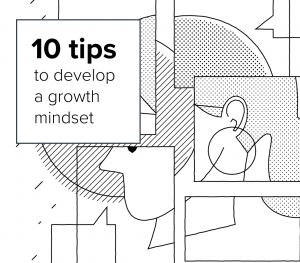Here’s the deal with job leveling.
As the name suggests, job leveling should be a process that leaves no room for talent to guess their career trajectories within the company. It should be a process that drives career pathways, remuneration, training, and thorough planning.
In reality, it is a commonly used HR term that stands for earning disparities and promotions. And indeed, if you look deeper into the hierarchy levels of some of the top IT companies, you’ll see that moving up the company ladder is quite challenging; an employee has to go through ten different hierarchy levels to reach the top. Just imagine how long you would have to work for such a company to reach one of the top positions. Ridiculous!
The good news is that not every company takes this process loosely. Some of them know the benefits of having a job leveling framework and take talent career pathing very seriously.
So, in this post, we would like to share our thoughts on job leveling and how it can, when it’s done right, be the tool for attracting and retaining employees.
Let’s get started!
What IS job leveling?
Well, according to the Society for Human Resource Management (SHRM), job leveling is a method that helps the organization to objectively and accurately assign values to jobs within that organization. Not only that, it is a process that evaluates talent knowledge and skills necessary to perform a job and defines a job’s duties, responsibilities, tasks, and level of authority within the organization’s hierarchy.
SHRM also suggests that the leveling process is one of the “stubborn problems in many organizations”.
Why is job leveling so problematic?
The answer is simple: jobs are difficult to value.
And when jobs are valued incorrectly, real issues arise, such as job dissatisfaction, manifesting as talent’s work feeling underappreciated.
But job dissatisfaction is just a minor side effect of poor job leveling. Here are the real, long-lasting effects of faulty job valuation:
- Talent confusion when it comes to job roles.
- Employee complaints.
- Too many job titles.
- People occupying the same role while having different job titles and grades.
- People with the same job titles performing different activities.
- Uncompetitive pay.
- General dissatisfaction with pay.
- Redundant work.
- Increased payrolls due to overpaying employees.
That said, it’s clear how a rotten job leveling process can lead to talent dissatisfaction, less employee engagement, and low retention. That’s why the process is so essential: talent needs to know their role and responsibilities, what is expected of them, and how they can reach new levels within an organization. When done right, job leveling creates an environment that boosts employee success, leading to higher retention rates.
So, how can you build a strong job leveling system?
Well, the bad news is that there is no one-size-fits-all answer to this question. A job leveling structure differentiates from company to company, depending on the organization’s size, structure, and stages of growth.
The good news is that to create a robust job leveling system, you only have to take into account how your employees feel about their job and responsibilities.
With Kadar, creating such a system is a piece of cake.
You can customize the list of Job Titles and set up your custom levels. You are also able to connect Job Titles with Attributes relevant to them. And If you haven’t established your system yet, you can choose between three templates that big fish companies, Facebook, Carta, and Amazon, used to create their systems. All the templates are fully editable, so you can adjust them to your organization’s needs.
When talent are thinking about their jobs, they consider four main factors.
We’ll call them the 4Ps:
- People
- Progress
- Pay
- Purpose
Let’s break this down.
When it comes to the people factor, employees tend to ask themselves whether they enjoy working alongside their team members. Regarding progress, there is a question of developing new skills and knowledge. When it comes to paying, talent usually questions fair compensation. Regarding compensation, employees tend to debate one question: why am I working this job, and what is the point of me being in this company?
Now, knowing the factors that employees consider when thinking about their jobs, you only have one task to complete: answer them all, so you can establish a clear-defined job leveling framework.
What is a job leveling framework, and how to build one?
A job leveling framework is a process that consists of several phases that result in creating flexible, maintainable job levels. To create a robust job leveling framework, you need to value all jobs, by developing consistency and creating career growth paths for your talent.
With Kadar’s clear overview of the tasks, assignees, and responsibilities, it’s easy to create assigned values that will work as a foundation for a job leveling framework, without creating confusion regarding team roles. With the Kadar app, you can also make clear career pathways for individuals within your team, ultimately boosting your company’s efficacy. Additionally, you are able to create clear promotion criteria by defining competencies, KPIs, and metrics that vary from role to role. Learn more about the Kadar product.
Here are the phases you need to go through to create a stable job leveling framework:
- Ensure that the company is ready for such implementation.
- Engage business leaders/managers in the implementation.
- Create a clear structure with roles and responsibilities.
- Use job evaluation tools as a foundation for the framework to define competencies for each level and position and a definition of promotion criteria.
- Establish a clear communication mechanism.
We will leave the first two phases up to you to define and control.
With the second three phases, Kadar can help. With the Kadar app, you are able to see all talent tasks, and responsibilities, allowing you to create a job leveling framework. Not only that, Kadar can help you define a job leveling structure that caters to your organizational needs. And if that was not impressive enough, our app can help you promote skill learning, thanks to the built-in eLearning library that is fully adjustable to your company’s needs.
What should you do once a job leveling framework is created?
If you have reached that point, all you can do is share the framework across the company and seek feedback.
It is essential you get employees’ input on the defined structure to see if your work was fruitful or not. Another reason why asking for feedback is important is that it engages employees, and engaged talent feels valuable and like their contribution truly matters, so it’s always a good idea to collect your talent’s opinions.
You can ask for feedback using a survey or a questionnaire and turn to Kadar for assistance. Kadar allows you to collect results to measure any skills or behavior, leaving you with accurate results that will aid your decision-making.
Note: Creating a job leveling framework is an ongoing process. As your company grows and roles develop, it is imperative you make adjustments to the framework and align it with the organization’s goals.
Conclusion
Now that you learned about job leveling and how to create and implement an effective job leveling system within your organization, we encourage you to explore the option of using Kadar as your job leveling right hand. Kadar will ensure that the roles and responsibilities within your company are clearly defined, leaving your talent motivated and productive.
And remember: with a stable job leveling structure, you can save time, money, and energy and motivate your employees to achieve organizational goals.

